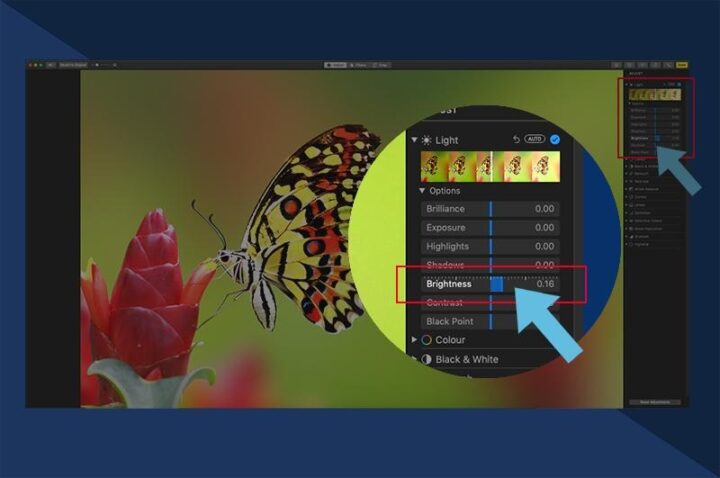In the fast-paced digital world of 2024, photo editing has become essential for anyone who wants to make a mark on social media, create captivating visual content, or simply enhance their photos. While Photoshop has long been the go-to software for professional editing, not everyone has access to it or the time to learn its intricacies.
But fear not! This article will explore how you can edit your photos without relying on Photoshop. From simple and user-friendly apps to advanced techniques that don’t require expensive software, we’ll cover essential tips and tricks to elevate your photo editing game in 2024.
The Rise of Photo Editing Alternatives

In the ever-evolving world of photo editing, the rise of alternative software options has been revolutionary. One such tool is Pixlr AI, which has captured the attention of digital creators with its powerful and intuitive features. By utilizing advanced artificial intelligence technology, Pixlr AI tools redefine how users edit and enhance their images. From automatic background removal to intelligent object recognition, these tools allow seamless and precise adjustments that were once only possible through complex editing software.
What sets Pixlr AI apart is its commitment to accessibility and user-friendly design. As more creators seek efficient solutions for their visual content needs, the rise of photo editing alternatives like Pixlr AI signals a shift in the industry’s landscape.
With cutting-edge capabilities that streamline workflow and enhance creative output, these tools represent a new era of empowerment for digital artists and content producers. The democratization of advanced photo editing tools allows for increased versatility and innovation across all levels of expertise, fostering a vibrant ecosystem of visual expression in today’s digital age.
Understanding Your Editing Tools

Editing tools are key components of the creative process, offering many ways to enhance and transform your work. Explore your chosen editing software’s full range of capabilities and don’t hesitate to experiment with different features. Understanding each tool’s potential allows you to harness their power effectively and elevate the quality of your final product.
Consider delving deeper into advanced tutorials or seeking out lesser-known functions that can add depth and complexity to your edits. Remember, proficiency comes from practice, so dedicate time to honing your skills with these tools. Embrace a mindset of continuous learning, as technology constantly evolves and embracing new techniques will set you apart in the competitive editing world.
Utilizing Online Editing Platforms
In today’s rapidly evolving digital landscape, online editing platforms have become increasingly important for creatives and professionals alike. One platform that has been making waves in the industry is Pixlr, whose cutting-edge AI tools bring a new level of convenience and precision to the editing process.
These AI-powered features offer a range of possibilities, from automatic background removal to intelligent object recognition, allowing users to achieve professional-level results with minimal effort.
Furthermore, the seamless integration of Pixlr’s AI tools into the online editing platform empowers users to streamline their workflow and significantly reduce time spent on tedious tasks. The accessibility and user-friendly interface of these tools make them suitable for both seasoned professionals and amateurs exploring the world of digital editing.
As technology advances, harnessing these capabilities allows individuals to elevate their creative output and unlock new dimensions in visual storytelling. With Pixlr’s AI tools at their fingertips, users can embark on a journey of innovation and experimentation that transcends traditional boundaries in online editing.
Mastering Mobile Editing Apps

The rise of mobile editing apps has revolutionized how we capture and share our visual stories. From basic photo edits to complex video production, these apps have placed powerful editing tools directly into the hands of everyday users. As more people rely on their smartphones for content creation, mastering mobile editing apps is essential for anyone looking to stand out in today’s digital landscape.
One key advantage of mobile editing apps is their accessibility and simplicity. Users can adjust colors, crop images, or add stunning filters to enhance their visuals with just a few taps. Additionally, the portability of these apps allows users to edit on the go, making it easier than ever to create and share compelling content in real time. Furthermore, many mobile editing apps offer intuitive interfaces and tutorials that help users quickly navigate advanced features without feeling overwhelmed.
Mastering mobile editing apps goes beyond basic image manipulation; it involves understanding the latest trends and techniques shaping digital storytelling. Today’s successful content creators utilize advanced features such as AI-powered enhancements, customizable presets, and seamless integration with social media platforms to elevate their work. As technology advances, staying updated on the newest tools and capabilities within mobile editing apps will be crucial for those seeking to make an impact in the competitive world of visual content creation.
Embracing the Future of Photo Editing

In the fast-evolving world of photo editing, embracing the future means diving into artificial intelligence and machine learning. These technologies are already revolutionizing how we enhance and manipulate images, offering unprecedented precision and creativity.
With AI-driven tools, photographers can automate routine tasks, like noise reduction or color correction, allowing them to focus on more complex aspects of their craft. Moreover, artificial intelligence (AI) is enabling entirely new forms of creative expression through features like style transfer algorithms that can apply the look and feel of one image to another.
Embracing the future also entails recognizing the growing influence of mobile editing apps in shaping the industry. As smartphones become increasingly sophisticated and powerful, so do photo editing applications on these devices. This trend democratizes image manipulation by making high-quality editing accessible to a broader audience.
Furthermore, augmented reality (AR) and virtual reality (VR) technologies are beginning to converge with photo editing, providing immersive ways to interact with photos beyond traditional 2D formats. As we progress, creators must stay open-minded about how these emerging technologies can reshape visual storytelling and artistic expression.

